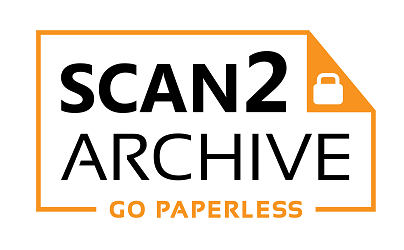REVOLUTIONISING CONSTRUCTION PROJECTS IN BRISBANE: THE POWER OF PLAN SCANNING
There is a shift in Brisbane’s bustling construction industry—one that doesn’t involve bricks, steel, or cranes but the project plans that carry every high-rise and infrastructure project. Brisbane’s builders, architects, and engineers are slowly but surely appreciating the benefits of plan scanning.
In the construction business, large-format plans, intricate diagrams, and project drafts are essential to success. While it’s common to witness builders studying large rolls of paper, Brisbane’s construction sector is—especially since they are experiencing a construction boom thanks to the upcoming 2032 Olympics—progressively shifting towards digital innovation.
In this blog, we explore how transitioning to large-format file digitisation is key to efficient document management and how this move aligns with every construction company’s business goals. Let’s begin!
Types of Construction Documents
To understand the growing need for a more efficient document management system, let’s first explore what documents are essential to daily construction operations:
- Architectural Plans: These detailed plans outline the design and layout of the building, specifying dimensions, materials, and structural elements. Architects, builders, and other professionals refer to these plans to ensure the project aligns with the original design.
- Structural Drawings: Structural engineers create these drawings, detailing the load-bearing aspects of the construction. They include information about the foundations, columns, beams, and other structural components.
- Site Plans: Site plans provide a broader perspective, outlining the project’s location on the site, utility connections, drainage systems, and other external factors.
- Specifications: These documents accompany the architectural and structural plans, detailing the materials to be used, quality standards, and construction methods. They serve as a reference point for contractors and subcontractors.
- Contracts: Contracts formalise agreements between various parties involved in a construction project, stipulating roles, responsibilities, timelines, and payment terms.
- Permits and Approvals: Obtaining permits from local authorities is often one of the initial steps in a construction project. These documents ensure the project complies with local building codes and regulations.
- Change Orders: As construction projects progress, modifications to the original plans are common. Change orders document these changes, including the reasons behind them and any associated costs.
- Inspection Reports: Building inspectors’ reports detail the compliance of the project with safety and quality standards. These reports can influence the project’s progress, as they may require adjustments or corrections.
- Invoices and Payment Records: Construction projects involve numerous financial transactions, and keeping accurate records of invoices and payments is essential for budget management and accounting.
- Closeout Documents: Once the project is completed, closeout documents compile all the project information, including warranties, as-built drawings, and operation and maintenance manuals.
The Case for Plan Scanning
The volume of construction documents generated per construction project can vary significantly depending on the size, scope, and complexity of the project.
For larger and more complex projects, the total volume of documents, if printed, can fill numerous filing cabinets. This is why many many construction companies are turning to document scanning and digital document management solutions to streamline their processes and reduce physical document storage requirements.
Plan scanning solutions are also essential for:
1. Creating Digital Backups
Construction projects involve intricate large-format documents, structural plans, and site diagrams, all of which are invaluable. In the analogue world, these documents are susceptible to damage, loss, or wear and tear. By digitising them, construction companies create secure digital backups that can be accessed effortlessly.
2. Facilitating Information Sharing
Large-format construction documents were traditionally challenging to share. With digitised plans, sharing information is so easy. Teams, clients, and stakeholders can access these documents remotely and collaborate with ease. This digital accessibility enhances communication and accelerates decision-making.
3. Improving Record-Keeping
The construction industry thrives on meticulous record-keeping. Plan scanning enhances this aspect by centralising and organising records digitally. No longer do you need to sift through stacks of paper for historical data. The digital format simplifies record retrieval, fostering efficiency.
4. Streamlining Organisation
Construction sites are always bustling with activities where countless documents are circulated to meet requirements. The digital organisation provided by plan scanning services simplifies the management of project plans, permit documents, specifications, and more—bringing order to the chaos and ensuring that every detail is just a few clicks away.
5. Building Sustainable Business Processes
Sustainability is a growing concern in the construction industry. Excessive paper usage not only harms the environment but also poses logistical challenges. Plan scanning addresses both of these issues. By reducing paper consumption and offering efficient digital alternatives, it aligns construction companies with eco-conscious practices. This shift towards sustainability not only benefits the environment but also streamlines business operations.
Plan Scanning Technologies
At the heart of reliable plan scanning services lies advanced scanning technology. The process involves high-resolution scanning of large-format documents, capturing intricate details, such as architectural plans, engineering schematics, and site diagrams. The resulting digital copies are precise replicas of their paper counterparts but offer unparalleled advantages in terms of accessibility, security, and organisation.
State-of-the-art scanning devices, like those employed by Scan2Archive, are equipped with optical character recognition (OCR) capabilities. This technology enables the conversion of scanned documents into fully searchable and editable digital files. As a result, construction professionals can quickly retrieve specific information, make necessary annotations, and share documents seamlessly.
Security and confidentiality are crucial in the construction industry, and plan scanning services prioritise these aspects. Scanned documents are stored securely, and access can be controlled, ensuring that sensitive project information remains confidential.
Scan2Archive’s State-of-the-Art Plan Scanning Solutions
Specialising in plan scanning, Scan2Archive remains a reliable partner in addressing the growing need for streamlined, organised, and secure operations.
What sets Scan2Archive apart is a wealth of experience over 38 years, providing digitisation, microfilm, and scanning services to a diverse clientele, including public and private businesses.
Our expertise shines in our ability to recognise the unique requirements of the construction sector, where large-format plans and diagrams are the lifeline of projects. Even better, they hold ISO Quality Accreditation, which signifies a commitment to the highest standards of quality and reliability.
As a signatory to Queensland GITC5 for Government purchasing and an approved vendor for NSW Government Procurement ICT Services SCN0020 Category G20-Digitisation, Scan2Archive has the credentials that prove our commitment to excellence.
Investing in Scan2Archive’s plan scanning solutions is an investment in efficiency. From creating digital backups to improving record-keeping, our services offer a comprehensive answer to the industry’s unique needs, paving the way for a brighter, more efficient future in construction.
Reach out to Scan2Archive today to get a free quote.





